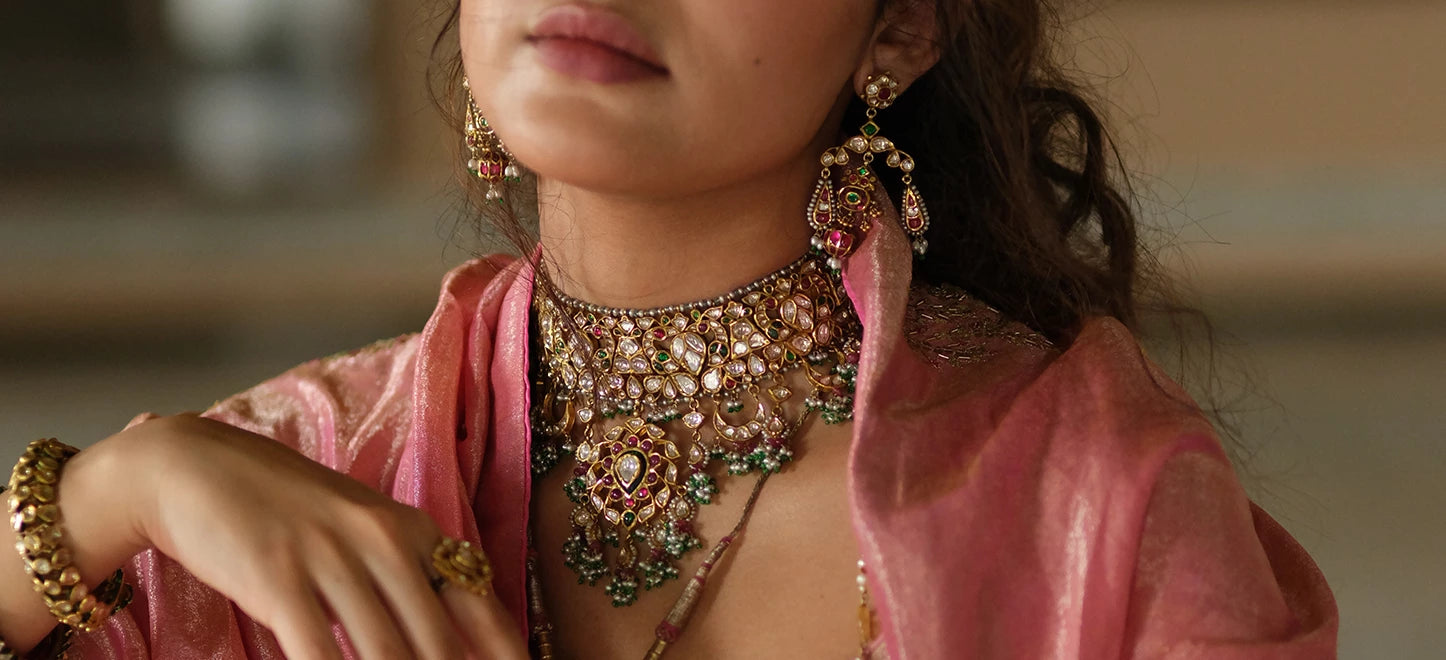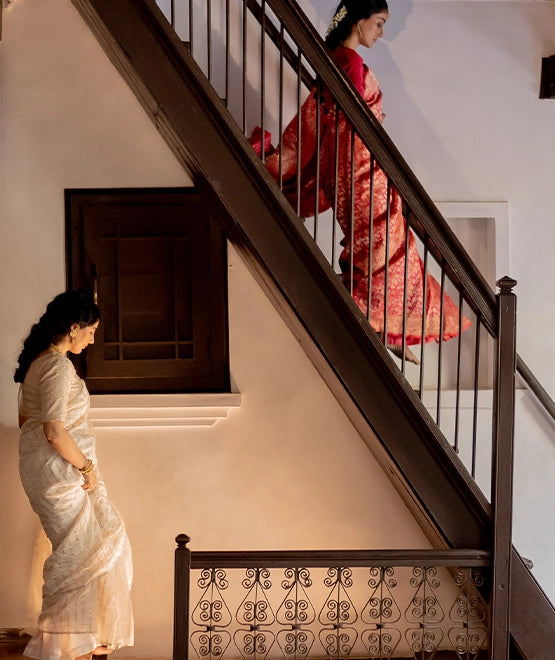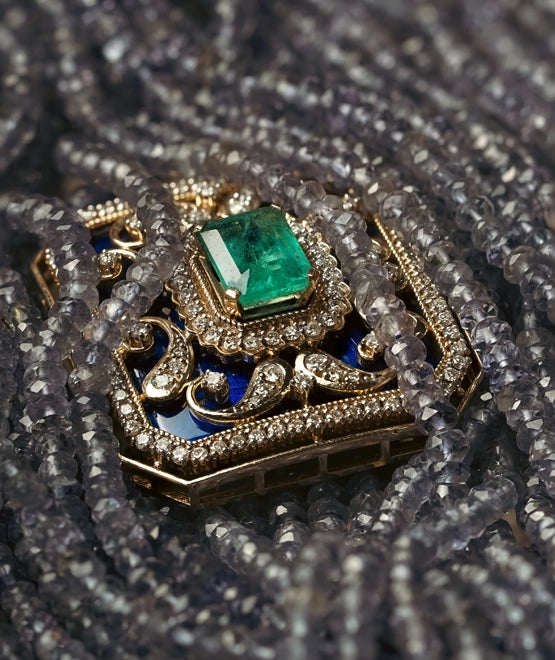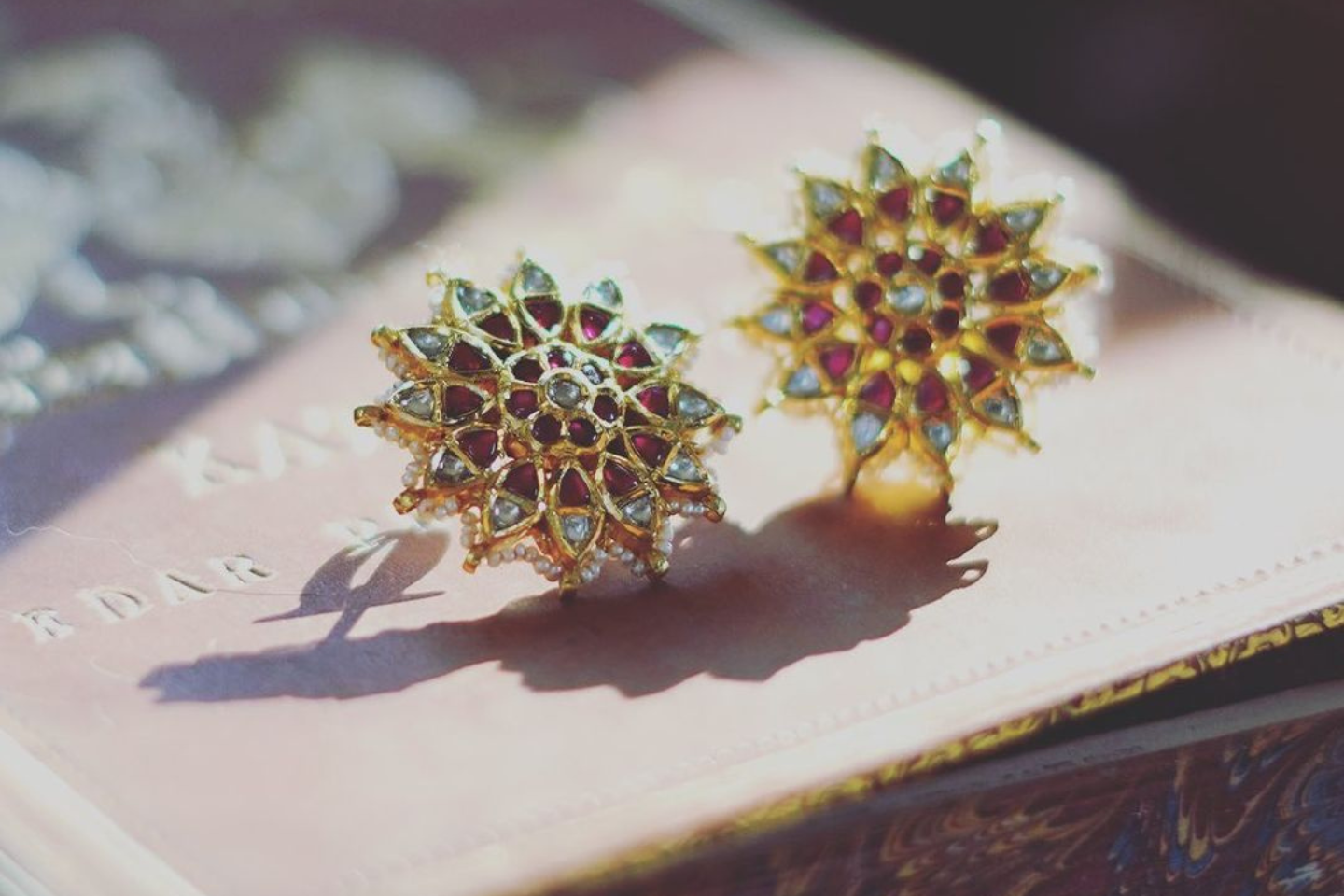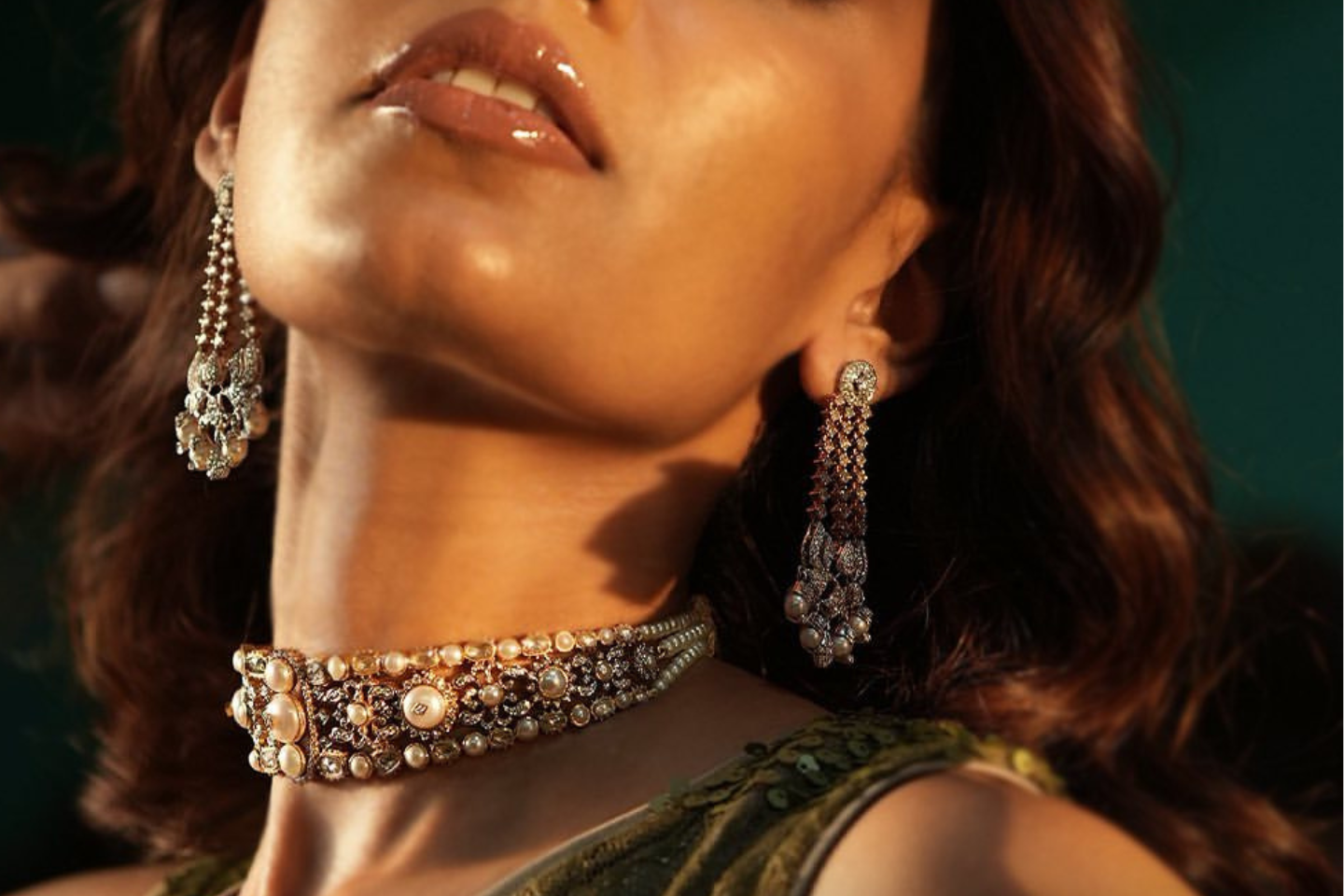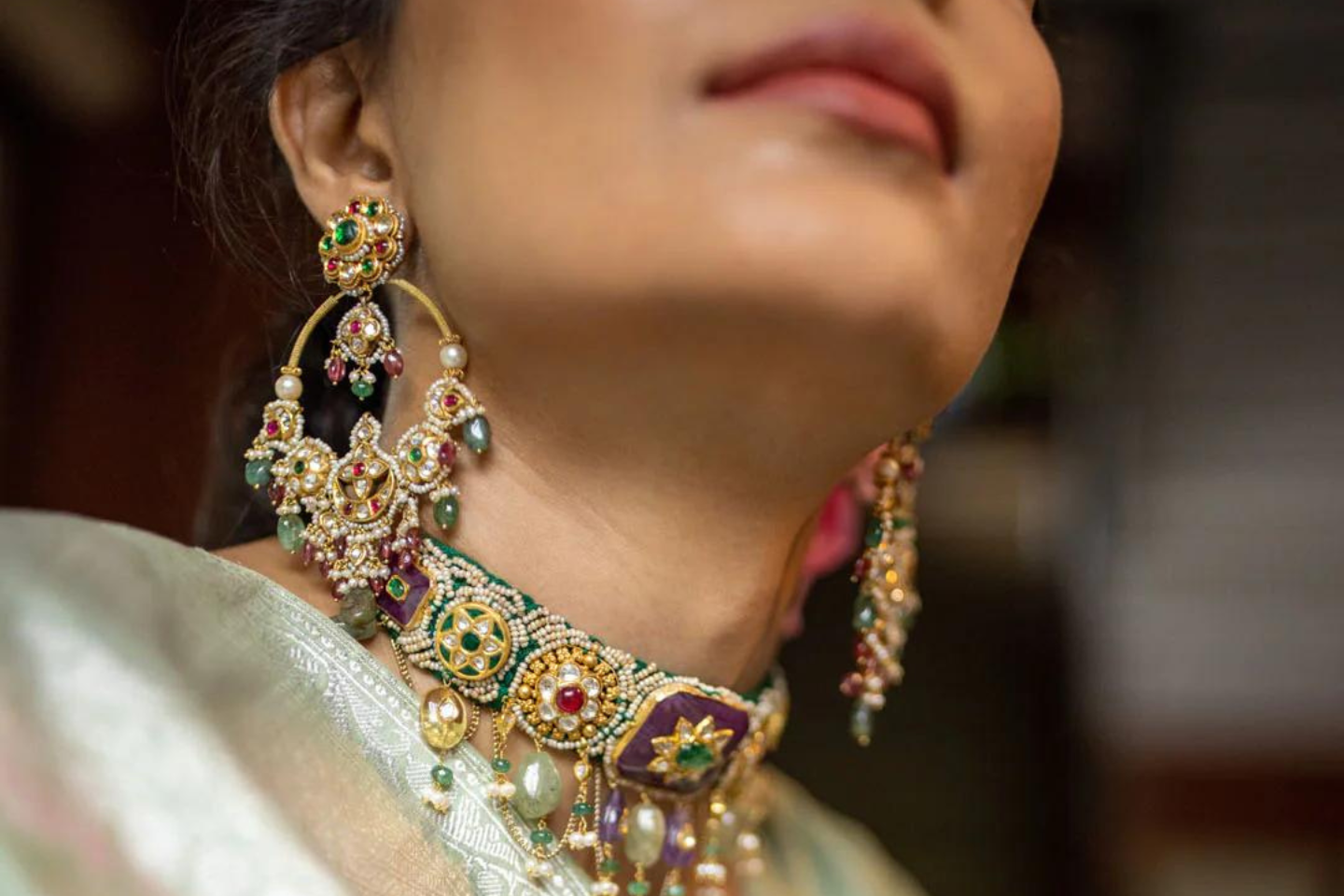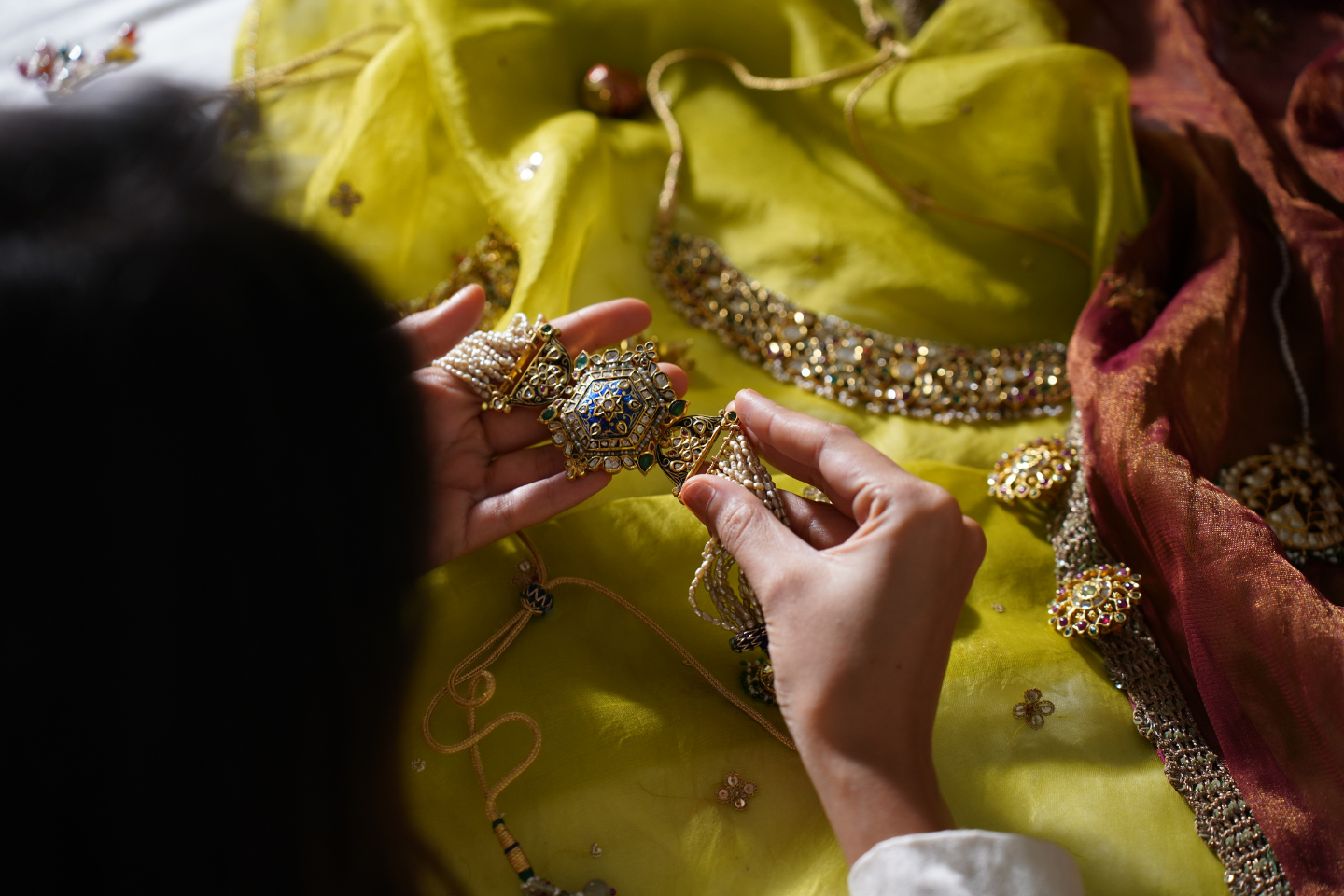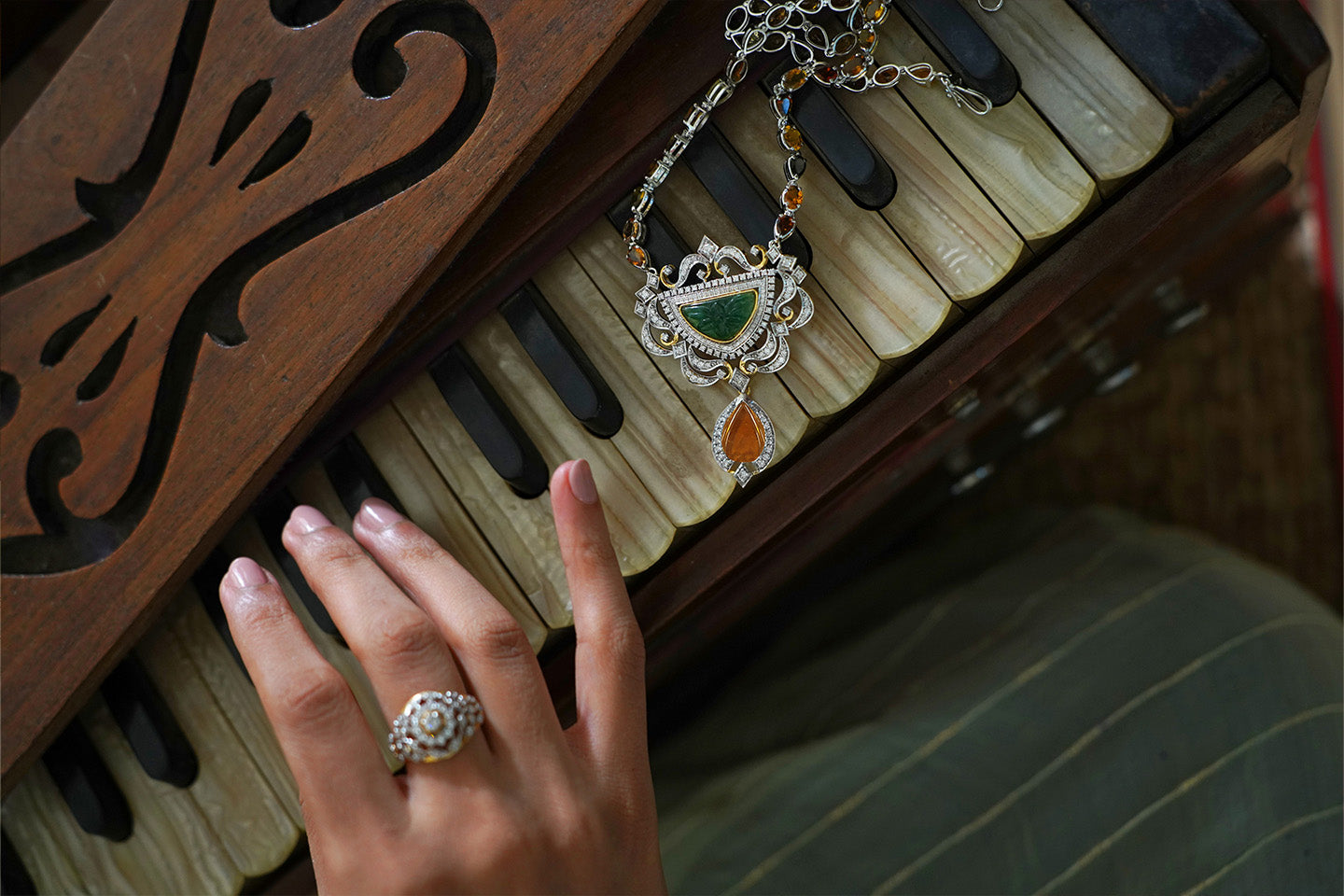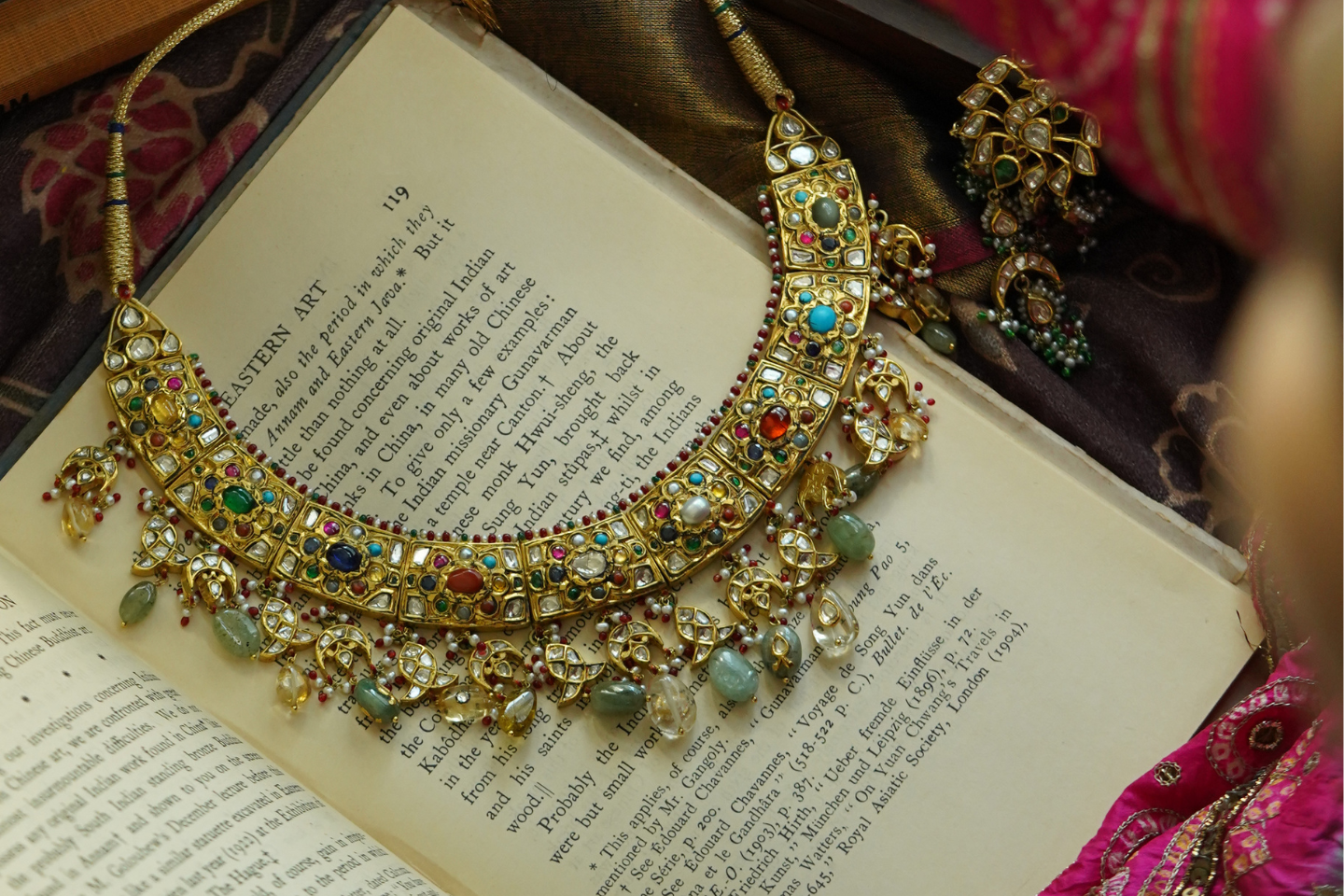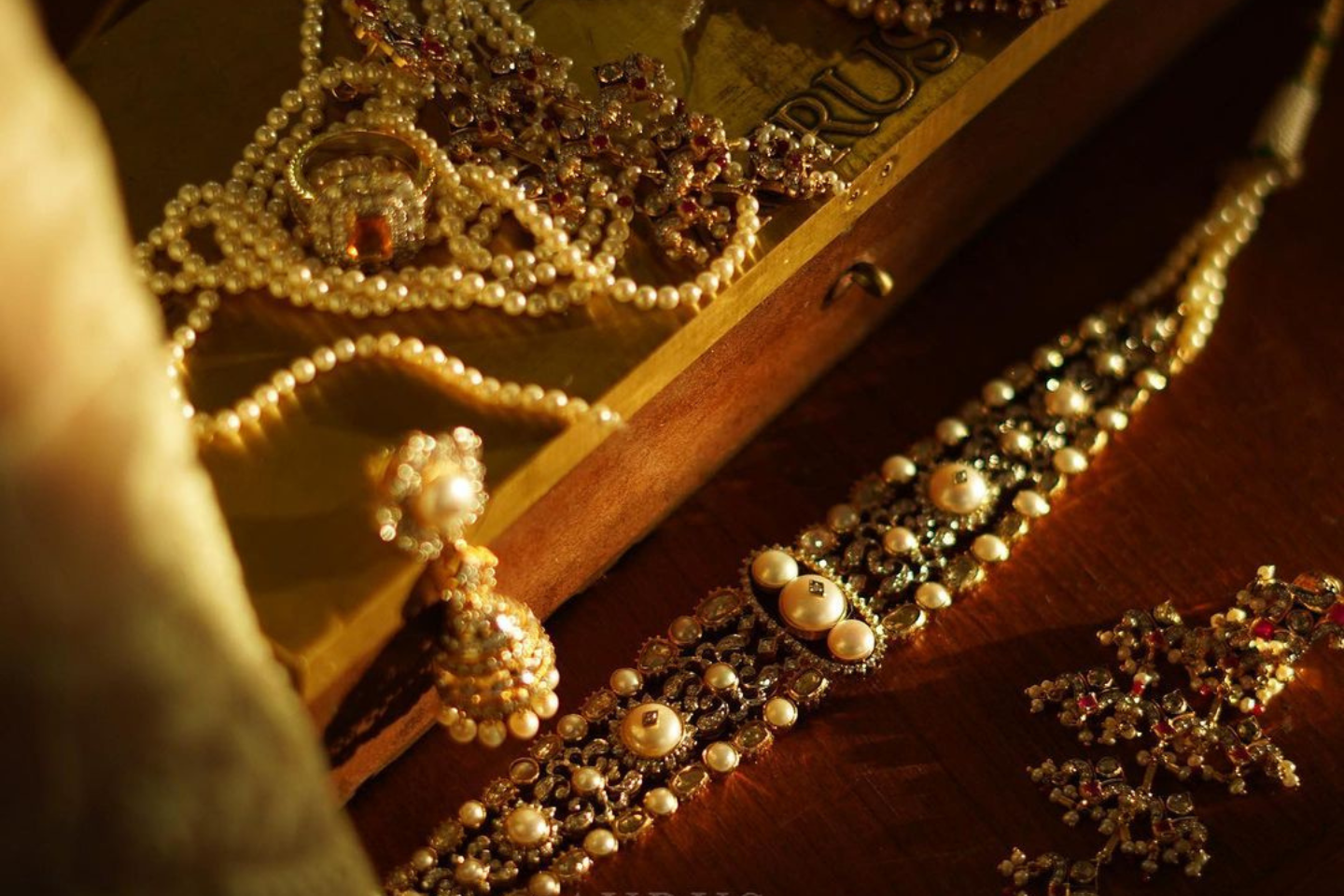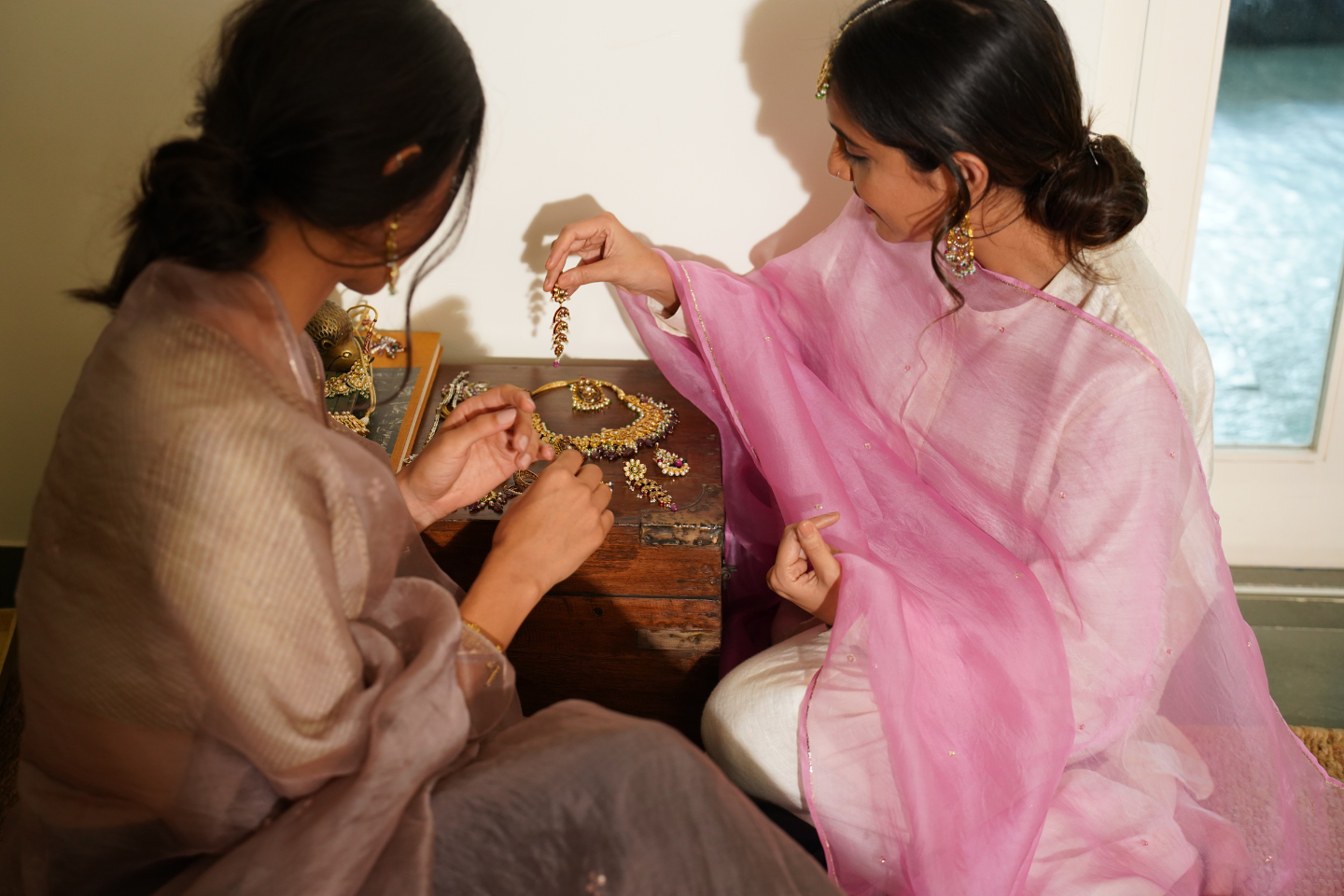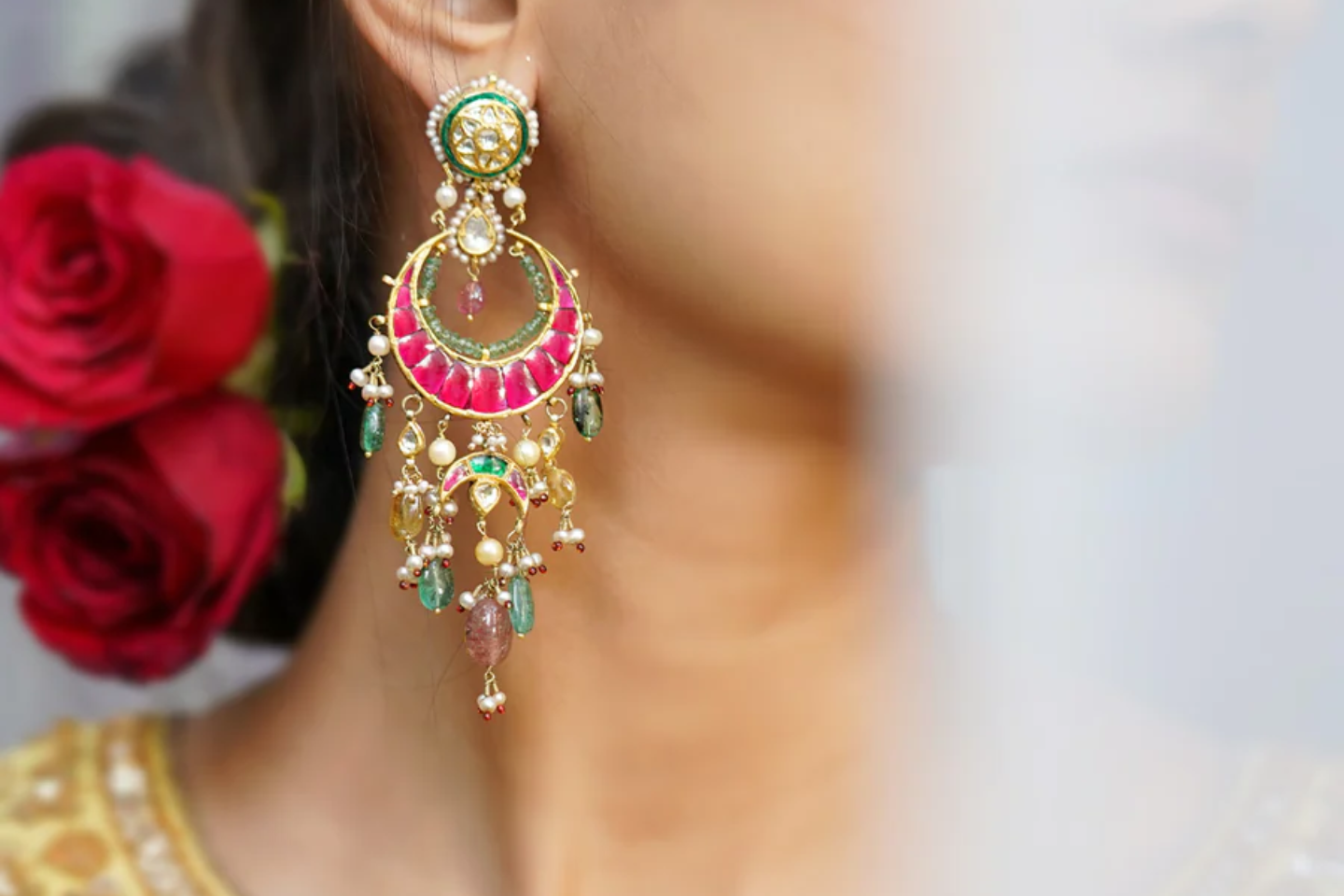You have a wedding in the family coming up. You’re all prepped and ready with your outfit plan.
Probably going lehenga - check.
Footwear - check.
You go on to take that heirloom polki necklace out of your locker, and to your utter disbelief, you see the diamonds which were strikingly white the last time you saw them, are now showing a hint of black.
A wide variety of handcrafted polki necklaces from Aurus jewels
We know it’s not a pleasing sight to see. And you’re not the only one to face this. polki jewelry going black over time, although unfortunate, is a common phenomenon.
Why does this happen?
What can you do to avoid this?
How can you make a better purchase the next time?
We have all the answers.
First Things First: Polki vs. Kundan vs. Jadau
To begin, let us clarify the difference between the three most commonly confused terms associated with Indian jewelry - namely Kundan, polki and jadau.
While polki, which denotes an uncut, unpolished diamond in its raw, unfaceted form, is relatively simpler to understand, kundan refers to the 24 karat gold foiling used on the base to hold the diamond in place. Sometimes, glass is also used instead of uncut diamonds to cut the cost of jewels. This glass-on-gold jewelry is also known as kundan jewelry by some jewelers, which is what creates confusion for the layman.
 A single polki diamond piece
A single polki diamond piece
Moving on to jadau, it does not denote a type of stone like kundan or polki, though it is often confused to be so. Jadau is the traditional name given to the technique of setting gold around the Polki, glass or any other colorless stone.
While polki is a timeless style of Indian jewelry, making it a good investment that can be passed down as heirlooms within families, we cannot ignore the fact that certain faults in its making, storage etc. can cause serious impairments to its original look and shine.
Also read: Decoding Polki, Kundan and Jadau
Why Polki Jewelry Turns Black
To understand what causes polki jewelry to blacken, we must understand the traditional technique behind crafting these jewels. Polki jewelry is made using gold foil, which has intricate designs at the back.

Polki diamond pieces with silver foil backing
When the casing of the gold foil (known as ‘daank’ in the traditional language) is not fitted intact to be air-tight around the diamonds, leaving space for moisture of the air to go in, it leaves a possibility for the metal to oxidize and turn grey. The loose space might also attract dust particles, which reduces the amount of light reflected, and in turn makes the polki shine less and look darker.

Syndicate polki diamonds being set in a choker necklace by our craftsmen
Setting polki diamonds immaculately is a time-taking process as this is what determines the life of the jewelry. A rushed job might cost less but its value might deteriorate over time.

Jheel polki necklace and polki earrings with polki and turquoise details from Aurus
Another sign to watch out for is the quality of the polki. The best quality is known as Syndicate grade of polki, after which comes the Zimbabwe grade and then at last, Khilwas polki, which is always treated to look better and more often than not, prone to blackening. Untreated polki is considered more valuable and hence costs more than treated polki. Hence, before your next purchase, it would be advisable to verify the quality of the polki jewelry you’re investing in.
Tourmaline and Amethyst polki maang tikka from Aurus
At Aurus, we only use syndicate grade polki in our designs, so you have nothing to worry about.
Choice of polki rings from Aurus Jewels
There are a few steps you can take too to make sure your polki jewelry set looks as good as original, even over the years.
-
For starters, remember to never spray perfumes and deodorants on your polki jewelry set. The chemicals they contain are not a friend of your uncut diamonds and will definitely blight its luster.
-
Never attempt to clean your polki jewelry with soap, water or a toothbrush. The water can easily go inside the space between the diamonds and the metal and the toothbrush can cause scratches on the polki’s surface. Instead, you can gently rub your polki with an eraser. That should help clean up some minor moisture-induced blotches.
-
Lastly, always store your jewelry, be it polki, or diamonds or gold, in airtight containers. The jewelry boxes you receive your jewelry in, usually come with fabric stuck with glue, which contains chemicals harmful for your jewelry. They are great for gifting but are not the best way to store your jewelry for longer periods. Instead, we advise wrapping your polki jewelry set in a soft tissue paper or muslin cloth for the best outcome. And remember, never keep two jewelry pieces together, for they might scratch against each other causing scratches.
There you have it. A fool-proof plan on the best practices to indulge in when it comes to your precious polki!
Now that you have the know-hows, we suggest you take a glance at our collection of polki necklaces and earrings, complete with vibrant colors and timeless designs.







